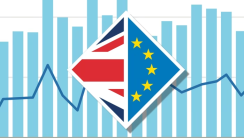There are times when taking on a variable loan can benefit a borrower, and then there are other times when it is a much riskier proposition. The only way to know for sure which is the best option for your mortgage financing needs is to have a crystal ball that can gaze into the future, but that’s not really an option.
If you are a homeowner in Manitoba and you are thinking about taking out a new mortgage or refinancing your current one, forecasters are advising that you might want to consider a variable rate loan for the best mortgage rates Winnipeg can offer. More lenders are seeing consumers asking for additional options for their lending needs. The trend of taking out variable rate loans is on the rise, and many financial analysts don't see an end in the near future.

The difference between a traditional rate loan and a variable one is that a fixed rate doesn’t change throughout the repayment term. A variable rate can go up or down depending on how the market fluctuates. Variable rates coincide with the prime rate in Canada. The prime rate is the best rate that is offered to consumers who have an excellent credit rating and who offer the least amount of risk to a lender.
A variable rate will move either up or down compared to where the prime rate is spread from highest to lowest. Although it can be a risky alternative for borrowers, they often offer lower rates that are more affordable for homebuyers. In 2016, the variation between the lowest and highest rates was very slim; it was as little at 0.2% of a point.
With not much difference in the loan percentages, it didn’t make financial sense for borrowers to take out variable loans or the risk that is involved with them. In 2016, statistics showed that as many as 90% of homebuyers opted for a fixed rate mortgage over any other variable option.
There are two main reasons that the trend is changing. The first reason is that the spread between the variable and fixed rates in Canada are starting to widen. The lowest fixed rate for a mortgage in Canada has steadily climbed by as much as .35% just since November of last year.
Within the same time frame, five-year variable rates have moved in the opposite direction, which means that you can save a whole lot of money by taking out a variable rate. It is becoming more financially sound to take on a greater risk for your mortgage borrowing, since you can save a considerable amount over the five-year term.
The amount of money that some borrowers can save over five years is pretty substantial when you consider that the average price of a Toronto home is somewhere around $700,000. If you minimize the percentage rate in just five years, you can save more than $10,000 in interest by taking out a variable rate loan.
Forecasters believe that there are several reasons that a homebuyer should consider a variable rate to be less risky and to offer advantages over a traditionally fixed loan. The first reason is that bond yields continue to rise, which will result in the percentage of fixed rates going up too. Bonds are what the financing costs of a fixed mortgage is based on. Lenders pass the extra cost of bonds onto the consumer to cover their own costs.
The US economy is what’s driving the bond rate increase. Analysts believe that the Trump Administration will drive up inflation by increasing public spending to try to stimulate economic growth. As inflation goes up, lenders will demand a higher rate to cover their returns.
For the bond market that means increasing yields. It also is predicted that the Federal Reserve will respond by increasing interest benchmark rates nearly a quarter of a percent. As the US economy appears to be improving, the Federal Reserve will have to compensate by raising interest rates in America, which will drive up the bonds.
In opposition, the Bank of Canada’s interest rate, which determines the variable rate in Canada, hasn’t shown any signs that it is going to budge, meaning there is likely to be very little movement over time for the variable rates in Canada.

In addition to the ripe conditions for variable rates to hold steady, new federal rules for five-year fixed rate mortgage practices are an asset. Currently, borrowers have to take and pass a stress test to prove that if the variable rate changes, they can handle the increase in payments due.
Since the five-year variable is the same as the variable rate for long-term borrowers, it makes sense that if you can qualify for the five-year ARM, you would be as well served taking out the long-term alternative and taking your chances.
Which rate is right for you depends on where you are financially and how much variability you can handle. If you want to roll the dice, however, things in Canada seem to be ripe for homebuyers to save some cash for as long as they can ride it out.
Are you looking to buy property in Canada ? Saint-donat-de-montcalm , Charlo , Bc , Calgary , New Brunswick
Are you looking to rent property in Canada ? Whistler , Montréal , Calgary , Toronto , Victoria






Author
Homesgofast com
Homesgofast.com is an international real estate portal and news source for Google news. Publishing international real estate, finance, homes and travel-related news and blogs for a targeted audience since 2002. Each news item is circulated to thousands of potential readers each day and is also available to the millions of people who sign up for Google news alerts. Find homes offered for sale and to rent direct from owners and some of the best real estate agents from over 35 countries